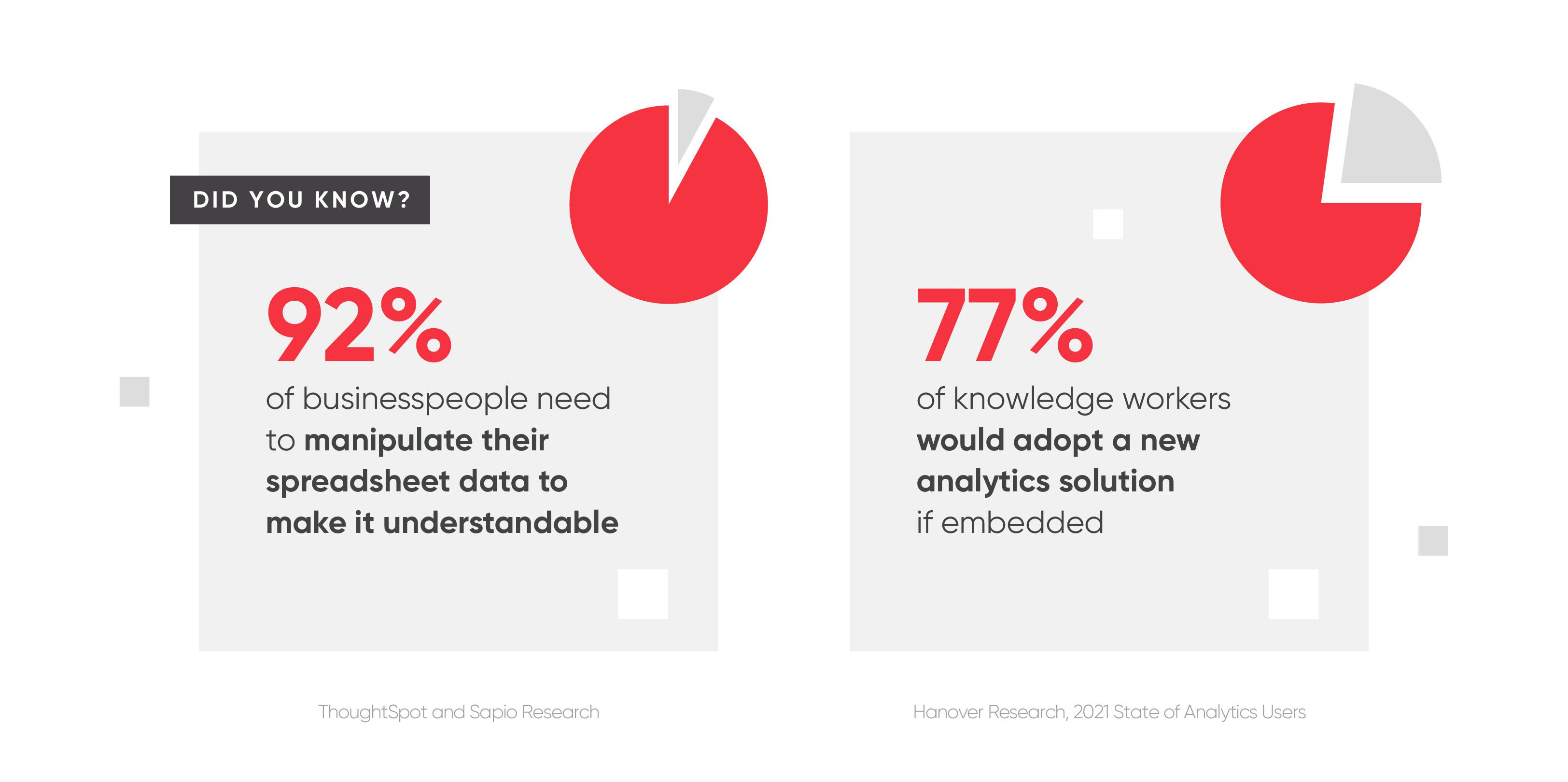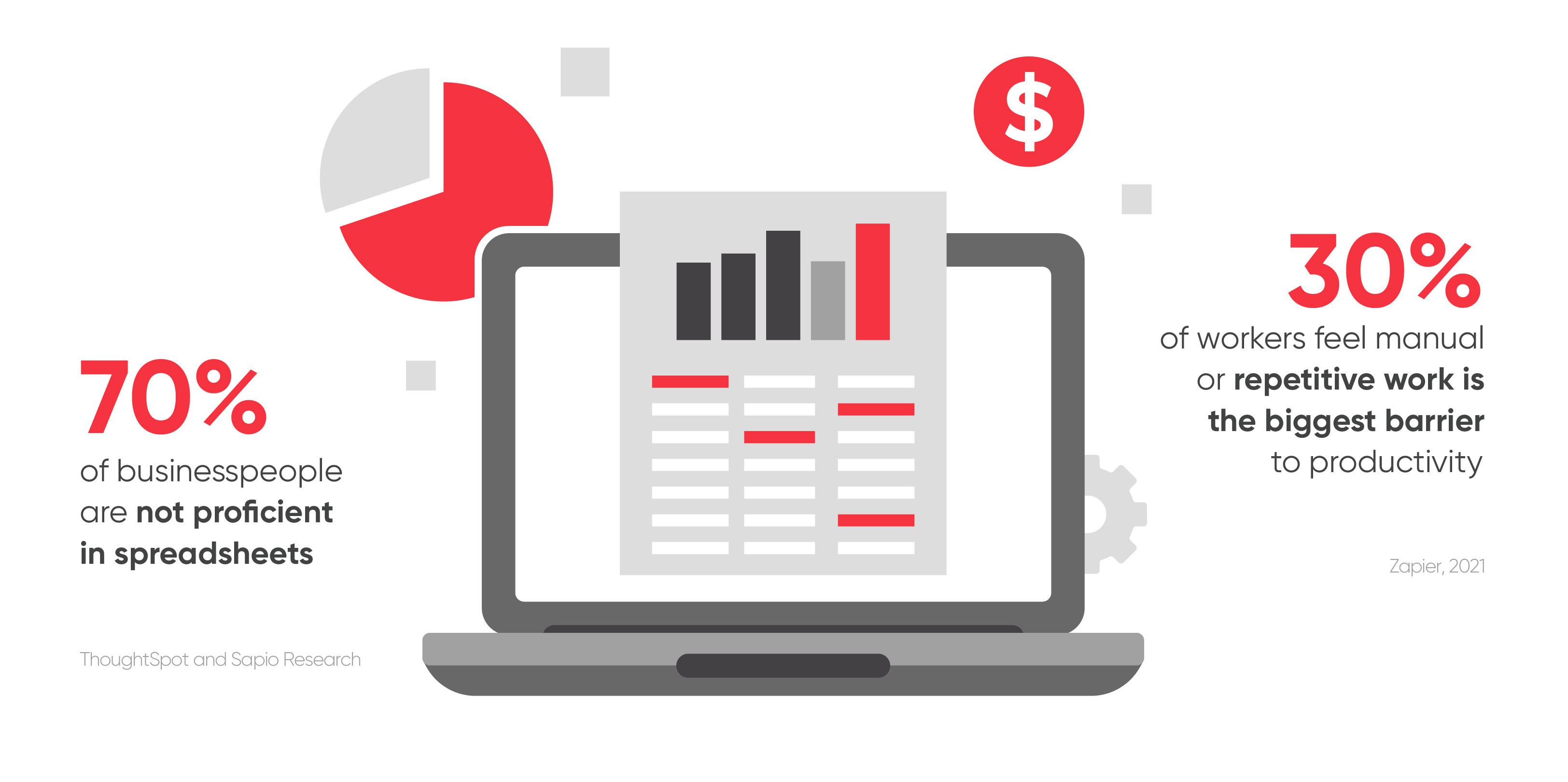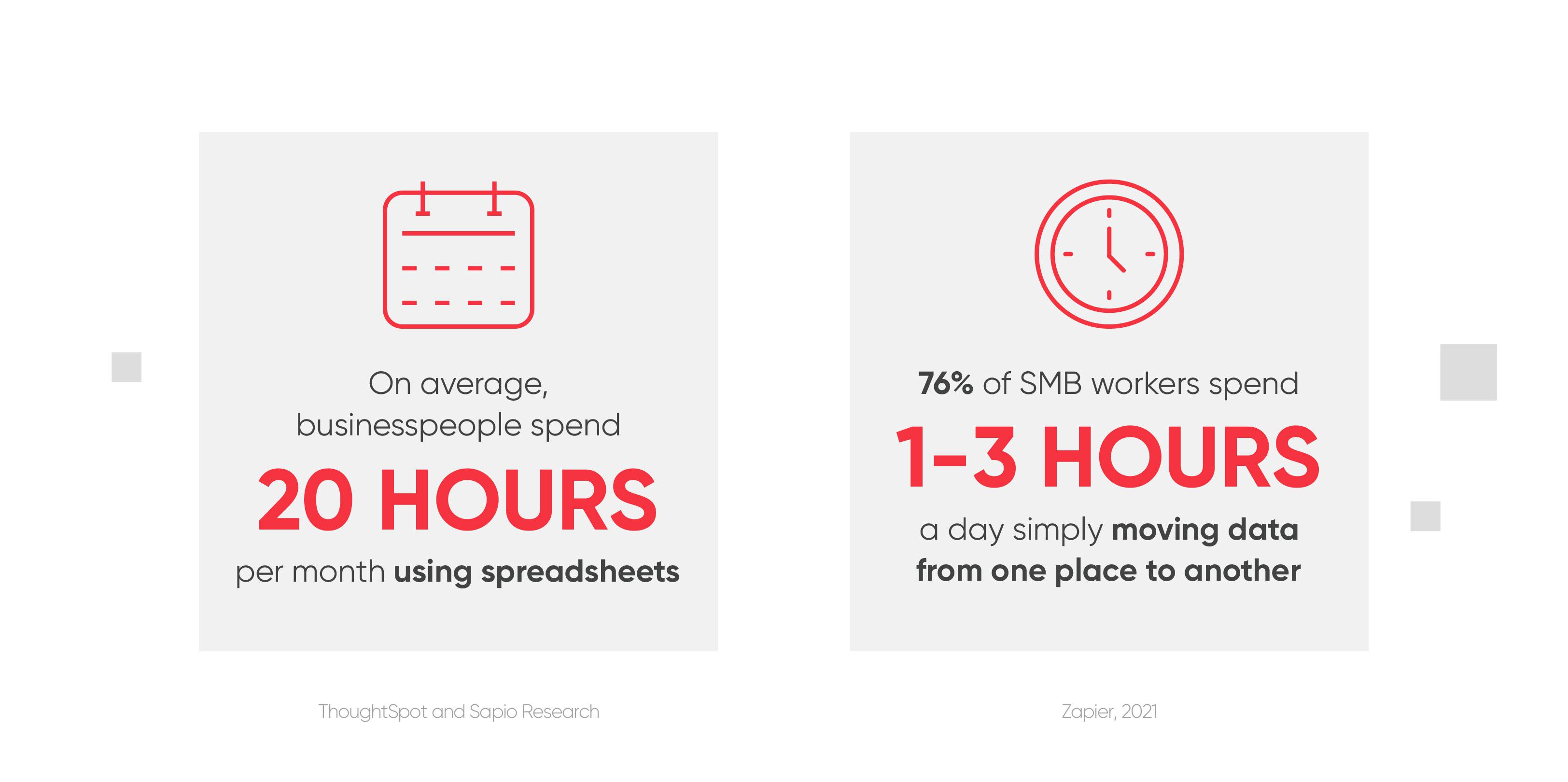Home > Blog
Read Time — 3 minutes
Unlock the Power of Embedded Analytics

Make Confident Decisions For Your Business
Small to medium-sized businesses (SMBs) across most industries are increasingly recognising the need to use data to make smart decisions. However, 92% of businesspeople need to manipulate their spreadsheet data to make it understandable, so there is a considerable gap to bridge to make the power of analytics more accessible. This is where embedded analytics software tools step in, providing a solution that completely changes the way your business operates and competes.

Data-driven decision-making with real-time access
With 77% of knowledge workers indicating they would adopt a new analytics solution if it were integrated with the software they routinely use, it’s clear that there is a strong demand for these tools. With them, your business no longer needs to rely solely on gut feeling or outdated reports to make critical choices.
Embedded analytics tools allow you to transform raw data into actionable insights, helping you more confidently make informed decisions. These tools offer real-time access to data, enabling you to adapt quickly to changing market conditions and customer preferences. With 70% of businesspeople not proficient in spreadsheets, embedded analytics bridges the gap by presenting real-time data in a user-friendly, visual format. This is especially vital in fast-paced industries, where delayed decisions can lead to lost opportunities.

Enhanced customer experience
With 40% of businesspeople often struggling to make sense of their data in spreadsheets, the risk of overlooking customer needs and preferences is significant. Embedded analytics enables your marketing team to gain a deeper understanding of customer behaviour, feedback, and purchase patterns, ultimately improving customer satisfaction.
By leveraging embedded analytics to access insights on customer preferences and trends, your business can tailor products and services, personalise marketing strategies, and improve customer interactions, enhancing brand loyalty and driving business growth.
Operational efficiency and scalability
With 76% of SMB workers spending 1-3 hours a day simply moving data from one place to another, there is a clear productivity and efficiency bottleneck in their organisations. Embedded analytics help businesses optimise operations by automating data collection and analysis, reducing manual data manipulation, and streamlining processes.
Embedded analytics tools within an ERP solution are cost-effective and can scale with the growth of your business. This ability ensures that with your expansion, your analytics tools can adapt to new demands, providing continued support for data-driven decisions.

Financial management
Accurate budgeting, forecasting, and financial analysis are essential for your company’s sustainable growth. Embedded analytics can be a game-changer in this regard, as it helps you generate accurate financial reports and gain insights into revenue and expense patterns. These tools can aid in financial planning, enabling your executives to assess profit margins, monitor sales trends, and make strategic financial decisions.
Sales and marketing insights
Embedded analytics provide valuable insights into your product performance, customer behaviour, and market trends, allowing you to craft more effective sales and marketing strategies. For example, home builders often leverage embedded analytics to analyse the success of different marketing campaigns and customer preferences for home features. This empowers them to tailor their marketing efforts and offer what customers want, resulting in increased sales.
User-Friendly interfaces
With 92% of businesspeople needing to manipulate spreadsheet data to make it understandable, embedded analytics is a welcome relief. The user-friendly interfaces make data analysis accessible to staff members without advanced technical skills, no matter what team they are on.
The power of embedded analytics software tools cannot be underestimated. With statistics indicating that technology early adopters are over 7.5% more likely to view technology as essential to achieving their objectives, it is easy to see that these tools are game-changing for SMBs. They provide SMBs across verticals with the means to make data-driven decisions, enhance customer experiences, and optimise operations.



